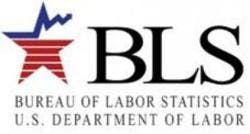Despite all the effort to encourage Americans to choose HMOs for their health care, the Bureau of Labor Statistics says three out of four workers choose fee-for-service plans.
In what seems counter to expectations, indemnity plans are most popular among the lowest paid workers, with 84 percent picking fee-for-service over an HMO.
Just in time for open-enrollment, the BLS Wednesday released another installment of its ongoing National Compensation Survey. In July, the bureau reported data on employee benefits, covering retirement, medical, sick leave, vacation, and life. In that release, the bureau reported that medical benefits were available to 69 percent of workers, while 64 percent were offered some form of retirement benefit.
A treasure trove of details about benefits
Wednesday’s report provides a detailed look at medical plans and defined benefit programs noting, for instance, that the $2,000 (individual) and $4,000 (family) average out-of-pocket maximums were the same for HMO or fee-for-service plans.
 If that’s the kind of detail you relish, then this report is for you.
If that’s the kind of detail you relish, then this report is for you.
It has no narrative or text, unless you count footnotes. Instead, it’s a collection of 40 tables of data broken out by type of worker, establishment, and geographically.
In it you’ll find information on eligibility requirements, the primary formulas for calculating benefits (32 percent of workers in a defined benefit plan get a percent of their earnings), and the availability of certain benefit features such as disability retirement benefits, lump sum payouts (common in plans offered to the lowest paid workers), and other such wonky bits of data.
Every HR leader, and benefits specialist, should at least scan the data to see how their business compares to others. Knowing, for instance, that $10 is the average co-pay for generic drugs and $25 is the average for branded drugs may come in handy this open enrollment season.
If you need a broader look at benefits, then the July report from the BLS is the one you want. Among the details in that report are such data points as the employee and employer share of medical premiums ( 80/20 average for private industry), and the availability of health benefits for unmarried partners of either sex.
